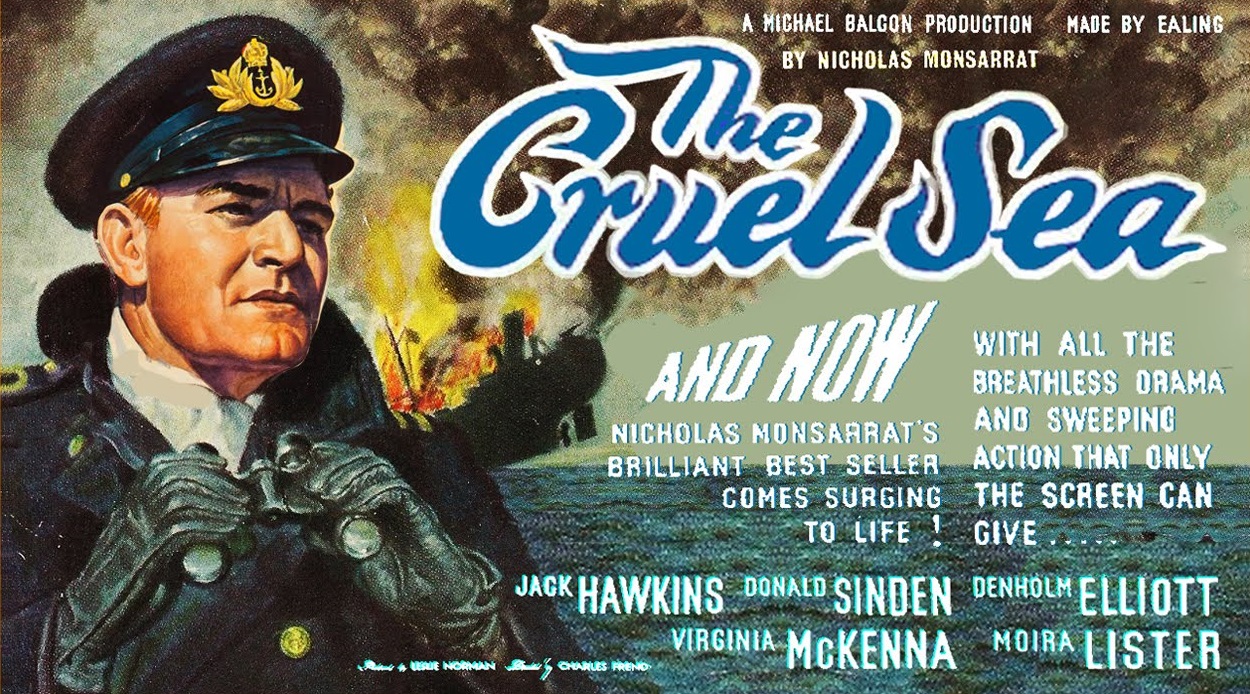
The Cruel Sea (1952): 10 Interesting Facts and Figures
Released in 1952, The Cruel Sea is a classic British war film directed by Charles Frend, based on Nicholas Monsarrat’s novel of the same name. The film delves into the harrowing experiences of the Royal Navy during World War II, showcasing the relentless battle against German U-boats in the Atlantic Ocean. With its powerful storytelling and remarkable performances, The Cruel Sea remains a significant piece of British cinema history. Here are ten intriguing facts and figures about this iconic film.
1. Based on Real Events
The film is based on the novel by Nicholas Monsarrat, who served in the Royal Navy during World War II. His experiences during the war inspired the characters and plot, bringing authenticity to the story.
2. A Tale of Maritime Warfare
The Cruel Sea focuses on the Battle of the Atlantic, a crucial campaign in WWII, where Allied forces aimed to protect vital shipping routes from German U-boats. The film captures the tension and peril of naval warfare.
3. Notable Cast
The film features a talented cast, including Jack Hawkins, Donald Sinden, and Ian Hunter. Jack Hawkins, in particular, delivered a memorable performance as Lieutenant-Commander George Ericson, the film’s protagonist.
4. Authentic Naval Equipment
To enhance realism, the filmmakers used actual naval equipment and ships. They collaborated with the Royal Navy, which provided access to various vessels and ensured accuracy in portraying naval operations.
5. Filming Locations
Principal photography took place on location in Britain, including coastal areas in Cornwall and the Isle of Man. The production team aimed to create a realistic depiction of the harsh maritime environment faced by sailors.
6. Critical Acclaim
Upon its release, The Cruel Sea received positive reviews from critics and audiences alike. It was praised for its gripping narrative and strong performances, solidifying its status as a classic British war film.
7. Box Office Success
The film was a commercial hit, grossing over £250,000 at the British box office in 1952. Its success contributed to a resurgence of interest in war films during that era.
8. Academy Award Nominations
The Cruel Sea received critical recognition and was nominated for an Academy Award for Best Cinematography. The film’s visual storytelling, combined with its compelling narrative, earned it accolades in the film industry.
9. Influence on Later Films
The film’s portrayal of naval warfare and its emotional depth influenced subsequent war films, establishing a template for storytelling in the genre. It paved the way for future cinematic explorations of military life and sacrifice.
10. Cultural Impact
The Cruel Sea remains an important cultural artifact, reflecting the attitudes and experiences of Britain during and after World War II. It continues to be studied and appreciated for its historical significance and artistic merit.
Conclusion
The Cruel Sea stands as a testament to the bravery and resilience of those who served in the Royal Navy during World War II. Through its gripping narrative, exceptional performances, and dedication to authenticity, the film has carved out a lasting place in British cinematic history. Its exploration of the harsh realities of maritime warfare ensures that it remains relevant and respected among film enthusiasts and historians alike.
Discover more from Anglotees
Subscribe to get the latest posts sent to your email.
